Related Research Articles

An earthquake – also called a quake, tremor, or temblor – is the shaking of the Earth's surface resulting from a sudden release of energy in the lithosphere that creates seismic waves. Earthquakes can range in intensity, from those so weak they cannot be felt, to those violent enough to propel objects and people into the air, damage critical infrastructure, and wreak destruction across entire cities. The seismic activity of an area is the frequency, type, and size of earthquakes experienced over a particular time. The seismicity at a particular location in the Earth is the average rate of seismic energy release per unit volume.

Seismology is the scientific study of earthquakes and the generation and propagation of elastic waves through the Earth or other planetary bodies. It also includes studies of earthquake environmental effects such as tsunamis as well as diverse seismic sources such as volcanic, tectonic, glacial, fluvial, oceanic microseism, atmospheric, and artificial processes such as explosions and human activities. A related field that uses geology to infer information regarding past earthquakes is paleoseismology. A recording of Earth motion as a function of time, created by a seismograph is called a seismogram. A seismologist is a scientist works in basic or applied seismology.

A tsunami is a series of waves in a water body caused by the displacement of a large volume of water, generally in an ocean or a large lake. Earthquakes, volcanic eruptions and other underwater explosions above or below water all have the potential to generate a tsunami. Unlike normal ocean waves, which are generated by wind, or tides, which are in turn generated by the gravitational pull of the Moon and the Sun, a tsunami is generated by the displacement of water from a large event.
A nuclear electromagnetic pulse is a burst of electromagnetic radiation created by a nuclear explosion. The resulting rapidly varying electric and magnetic fields may couple with electrical and electronic systems to produce damaging current and voltage surges. The specific characteristics of a particular nuclear EMP event vary according to a number of factors, the most important of which is the altitude of the detonation.

A nuclear bunker buster, also known as an earth-penetrating weapon (EPW), is the nuclear equivalent of the conventional bunker buster. The non-nuclear component of the weapon is designed to penetrate soil, rock, or concrete to deliver a nuclear warhead to an underground target. These weapons would be used to destroy hardened, underground military bunkers or other below-ground facilities. An underground explosion releases a larger fraction of its energy into the ground, compared to a surface burst or air burst explosion at or above the surface, and so can destroy an underground target using a lower explosive yield. This in turn could lead to a reduced amount of radioactive fallout. However, it is unlikely that the explosion would be completely contained underground. As a result, significant amounts of rock and soil would be rendered radioactive and lofted as dust or vapor into the atmosphere, generating significant fallout.

The Tsar Bomba, also known by the alphanumerical designation "AN602", was a thermonuclear aerial bomb, and the most powerful nuclear weapon ever created and tested. The Soviet physicist Andrei Sakharov oversaw the project at Arzamas-16, while the main work of design was by Sakharov, Viktor Adamsky, Yuri Babayev, Yuri Smirnov, and Yuri Trutnev. The project was ordered by Nikita Khrushchev in July 1961 as part of the Soviet resumption of nuclear testing after the Test Ban Moratorium, with the detonation timed to coincide with the 22nd Congress of the Communist Party of the Soviet Union.
A bunker buster is a type of munition that is designed to penetrate hardened targets or targets buried deep underground, such as military bunkers.
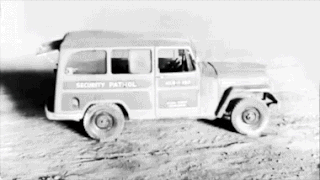
The effects of a nuclear explosion on its immediate vicinity are typically much more destructive and multifaceted than those caused by conventional explosives. In most cases, the energy released from a nuclear weapon detonated within the lower atmosphere can be approximately divided into four basic categories:
A hypocenter or hypocentre, also called ground zero or surface zero, is the point on the Earth's surface directly below a nuclear explosion, meteor air burst, or other mid-air explosion. In seismology, a hypocenter of an earthquake is its point of origin below ground; a synonym is the focus of an earthquake.
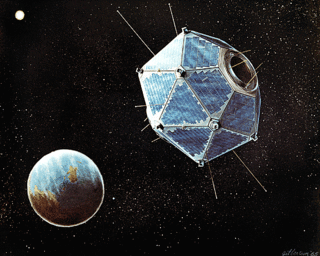
Project Vela was a United States Department of Defense project to monitor Soviet Union compliance with the 1963 Partial Test Ban Treaty. The treaty banned the testing of nuclear weapons in the atmosphere, in outer space, and underwater, but permitted underground testing.
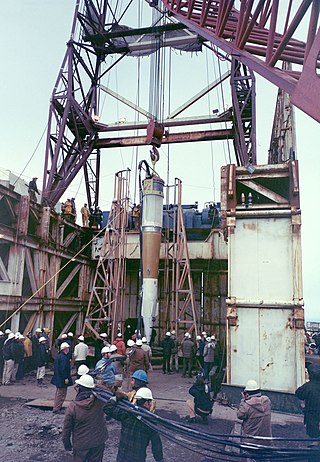
Amchitka is a volcanic, tectonically unstable and uninhabited island in the Rat Islands group of the Aleutian Islands in southwest Alaska. It is part of the Alaska Maritime National Wildlife Refuge. The island, with a land area of roughly 116 square miles (300 km2), is about 42 miles (68 km) long and 1 to 4 miles wide. The area has a maritime climate, with many storms, and mostly overcast skies.
Induced seismicity is typically earthquakes and tremors that are caused by human activity that alters the stresses and strains on Earth's crust. Most induced seismicity is of a low magnitude. A few sites regularly have larger quakes, such as The Geysers geothermal plant in California which averaged two M4 events and 15 M3 events every year from 2004 to 2009. The Human-Induced Earthquake Database (HiQuake) documents all reported cases of induced seismicity proposed on scientific grounds and is the most complete compilation of its kind.

High-altitude nuclear explosions are the result of nuclear weapons testing within the upper layers of the Earth's atmosphere and in outer space. Several such tests were performed at high altitudes by the United States and the Soviet Union between 1958 and 1962.
The earthquake bomb, or seismic bomb, was a concept that was invented by the British aeronautical engineer Barnes Wallis early in World War II and subsequently developed and used during the war against strategic targets in Europe. A seismic bomb differs somewhat in concept from a traditional bomb, which usually explodes at or near the surface and destroys its target directly by explosive force; in contrast, a seismic bomb is dropped from high altitude to attain very high speed as it falls and upon impact, penetrates and explodes deep underground, causing massive caverns or craters known as camouflets, as well as intense shockwaves. In this way, the seismic bomb can affect targets that are too massive to be affected by a conventional bomb, as well as damage or destroy difficult targets such as bridges and viaducts.

Underground nuclear testing is the test detonation of nuclear weapons that is performed underground. When the device being tested is buried at sufficient depth, the nuclear explosion may be contained, with no release of radioactive materials to the atmosphere.
The tsunami bomb was an attempt during World War II to develop a tectonic weapon that could create destructive tsunamis. The project commenced after US Navy officer E.A. Gibson noticed small waves generated by explosions used to clear coral reefs. The idea was developed by the United States and New Zealand military in a program code named Project Seal. The weapons concept was deemed feasible, but the weapons themselves were never fully developed or used. A related concept, the bouncing bomb was developed and used in World War II, to be dropped into water as a means to destroy German dams and cause loss of industrial capacity and widespread flooding.
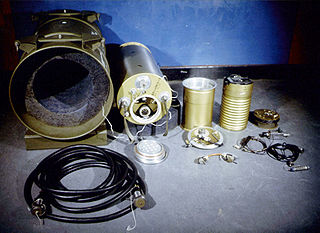
Atomic demolition munitions (ADMs), colloquially known as nuclear land mines, are small nuclear explosive devices. ADMs were developed for both military and civilian purposes. As weapons, they were designed to be exploded in the forward battle area, in order to block or channel enemy forces. Non-militarily, they were designed for demolition, mining or earthmoving. However, apart from testing they have never been used for either purpose.

Cannikin was an underground nuclear weapons test performed on November 6, 1971, on Amchitka island, Alaska, by the United States Atomic Energy Commission. The experiment, part of the Operation Grommet nuclear test series, tested the unique W71 warhead design for the LIM-49 Spartan anti-ballistic missile. With an explosive yield of almost 5 megatons of TNT (21 PJ), the test was the largest underground explosion ever detonated by the United States.
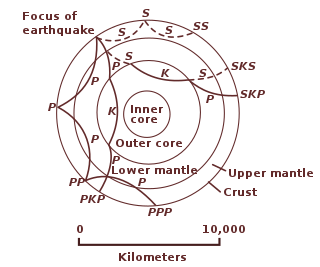
The following outline is provided as an overview of and topical guide to geophysics:
This is a list of different types of earthquake.
References
- ↑ 927N0104A Moscow ZNANIYE-Sila (in Russian) No. 1, Jan 92 p2-13, translated in JPRS Report on Science and Technology, October 1992
- 1 2 Kotlyakov, Valdimir (2010). Natural Disasters - Volume I. Singapore: UNESCO/EOLSS Publishers. p. 116. ISBN 9781848267596.
- 1 2 3 "Can nuclear explosions cause earthquakes?". www.usgs.gov. Retrieved 2018-09-28.
- ↑ Foulger, Gillian R.; Wilson, Miles P.; Gluyas, Jon G.; Julian, Bruce R.; Davies, Richard J. (2018). "Global review of human-induced earthquakes". Earth-Science Reviews. 178 (published March 2018): 438–514. Bibcode:2018ESRv..178..438F. doi: 10.1016/j.earscirev.2017.07.008 .
- ↑ Marghany, Maged (2018). Advanced Remote Sensing Technology for Tsunami Modelling and Forecasting. Boca Raton, FL: CRC Press. pp. 4–21. ISBN 9780815386391.
- ↑ R Clark, Nature, 10 October 1996, quoted in Bulletin of the Atomic Scientists Jan 1997, In Brief section
- ↑ Federation of American Scientists: Address by US Secretary of State at 1997 conference on terrorism
- ↑ Bingham, Eugene (28 September 1999). "Devastating tsunami bomb viable, say experts". The New Zealand Herald . Retrieved 19 November 2011.
- ↑ "MythBusters Episode 60: Earthquake Machine". MythBusters Results. 30 August 2006.
- ↑ "Convention on the Prohibition of Military or Any Other Hostile Use of Environmental Modification Techniques (ENMOD)". United Nations Office for Disarmament Affairs (UNODA). Retrieved 17 September 2023. Page links to text of Convention, which entered into force 5 October 1978.
- ↑ LiveScience: Chavez: US 'Tectonic Weapon' Caused Haiti Quake, 29 January 2010
- ↑ Komsomolskaya Pravda, 30 May 1992, p1, translated in JPRS Report on Science and Technology, 10 June 1992
- ↑ Soica, Mihai (February 9, 2023). "Teoria conspirației de la tribuna Senatului României. Șoșoacă susține că Turcia a fost atacată "cu arme geologice"". Evenimentul Zilei (in Romanian). Retrieved October 15, 2023.